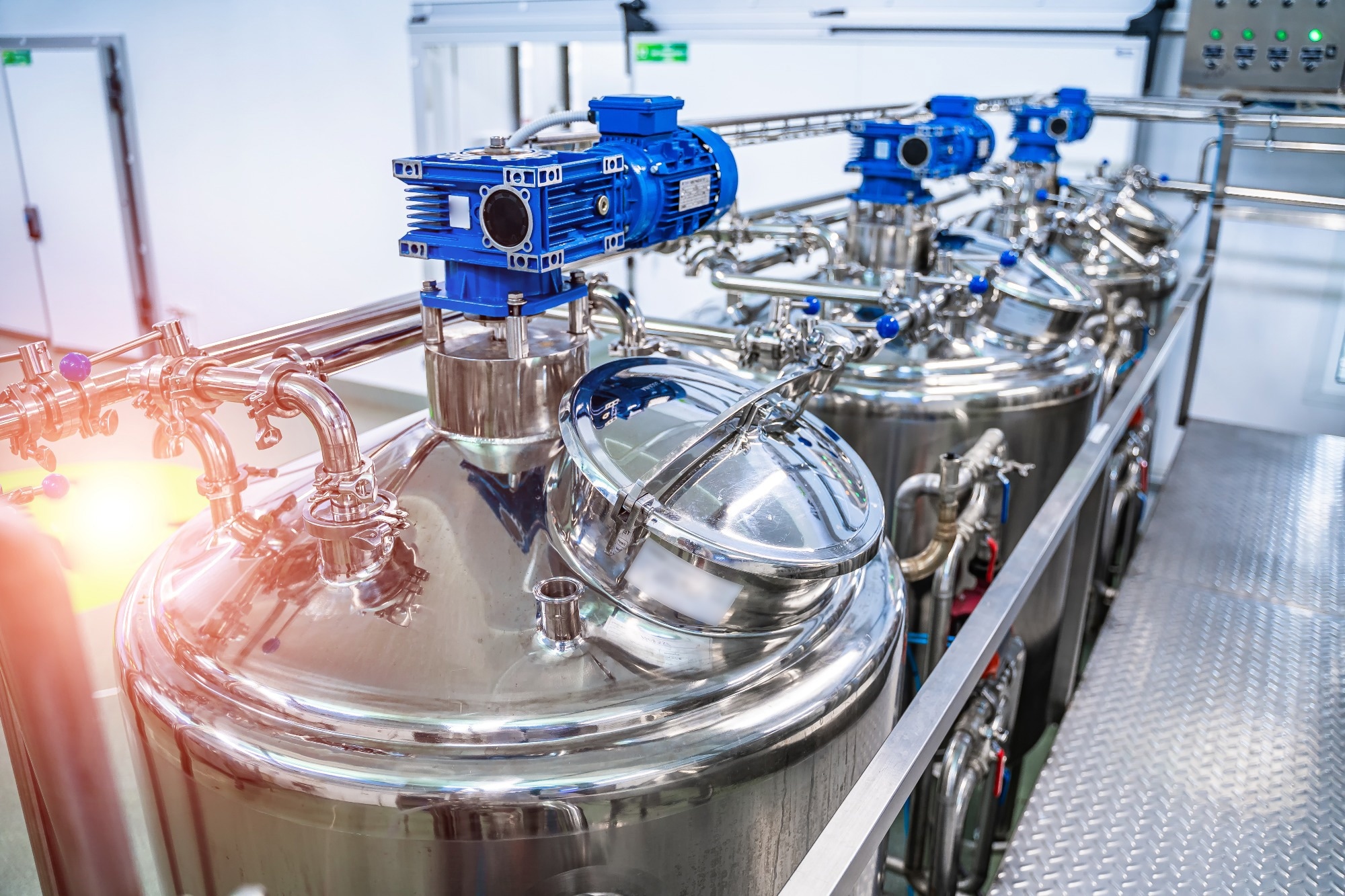The U.S. Food and Drug Administration (FDA), together with the U.S. Department of Agriculture (USDA), recently announced that the FDA-approved commercial milk pasteurization process effectively inactivates the Highly Pathogenic H5N1 Avian Influenza (H5N1 HPAI) virus in cattle milk and milk products.
 Study: Inactivation of highly pathogenic avian influenza virus with high temperature short time continuous flow pasteurization and virus detection in bulk milk tanks. Image Credit: Terelyuk / Shutterstock
Study: Inactivation of highly pathogenic avian influenza virus with high temperature short time continuous flow pasteurization and virus detection in bulk milk tanks. Image Credit: Terelyuk / Shutterstock

 This news article was a review of a preliminary scientific report that had not undergone peer-review at the time of publication. Since its initial publication, the scientific report has now been peer reviewed and accepted for publication in a Scientific Journal. Links to the preliminary and peer-reviewed reports are available in the Sources section at the bottom of this article. View Sources
This news article was a review of a preliminary scientific report that had not undergone peer-review at the time of publication. Since its initial publication, the scientific report has now been peer reviewed and accepted for publication in a Scientific Journal. Links to the preliminary and peer-reviewed reports are available in the Sources section at the bottom of this article. View Sources
Background
In March 2024, the highly pathogenic H5N1 Avian Influenza (H5N1 HPAI) virus was detected in dairy cow herds and raw cow milk in the U.S. The virus often causes deadly infections in poultry, commonly known as bird or avian flu.
Wild birds primarily transmit the virus to domestic poultry and other birds and animals. Although this type of virus does not frequently infect humans, sporadic infections have been detected in humans.
Scientists at the FDA and USDA conducted a study to estimate the amount of infectious HPAI virus in raw milk in infected states where herds tested positive for the HPAI virus. They also explored whether the FDA-approved commercial milk pasteurization process effectively inactivates the virus.
The pasteurization process kills harmful pathogens by heating milk to a specific temperature for a specific time period. By making milk safer, the process has helped maintain American public health for over 100 years.
Study design
The FDA scientists collected 275 raw milk (unpasteurized) samples from multiple farms in four affected states. The USDA scientists tested these samples using quantitative real-time polymerase chain reaction (qRT-PCR) to determine the presence of viral RNA.
The samples that tested positive for the H5N1 HPAI virus were subsequently subjected to gold standard egg inoculation testing to determine the presence of live virus.
In the next phase of the study, scientists evaluated whether continuous-flow processing of raw milk at 72°C for 15 seconds can effectively eliminate the virus. These treatment conditions are commonly termed as "high-temperature-short-time" (HTST) or "flash pasteurization," representing the pasteurization treatment required by the Code of Federal Regulations (CFR) and the Pasteurized Milk Ordinance (PMO) that is most commonly utilized by the dairy industry in the U.S.
The scientists used homogenized raw milk artificially contaminated with a viral concentration higher than that found in any raw milk samples (approximately 5 million viral particles per milliliter of milk).
Inactivation studies commonly use high concentrations of viruses or bacteria to depict high levels of inactivation. The levels are comparable to those used in benchtop experiments.
They processed contaminated milk in an HTST continuous-flow pasteurization system, which was designed to closely simulate commercial processing conditions (heating milk at 72°C for 15 seconds).
Important observations
Quantitative RT-PCR analysis detected H5N1 HPAI virus RNA in 57% of tested raw milk samples.
Egg inoculation testing of qRT-PCR-positive samples revealed that 24.8% of them are positive for infectious viruses with an average concentration of about 3000 viral particles per milliliter of milk.
No significant correlation was observed between qRT-PCR-estimated viral titer and quantified viable virus.
Milk samples processed by the HTST continuous-flow pasteurization system showed complete virus inactivation. The analysis of samples collected in mid-process revealed that the virus was rapidly inactivated.
Further analysis by FDA experts indicated that the pasteurization conditions could eliminate at least one trillion viral particles per milliliter of milk.
Study significance
The study finds that the HTST continuous-flow pasteurization system effectively eliminates the H5N1 HPAI virus from raw milk with a large margin of safety. Overall, the findings ensure the safety of commercial milk supply in the U.S.
Stephen Walker, FDA's Consumer Safety Officer, said, "This commercial milk processing simulation study is notably different from some recent benchtop studies published by other institutions, which have shown mixed results regarding the sensitivity of the virus to thermal treatment. Other recent studies relied on benchtop equipment that was likely insufficient to simulate HTST processing conditions accurately. In contrast, the study's results announced today strongly indicate that the virus is much more sensitive to heat treatment with commercial pasteurization equipment than other studies might suggest."
Nathan Anderson, Director of FDA's Division of Food Processing Science and Technology, stated, "While testing finished product post-pasteurization is one strategy to detect potential problems in finished products, validating the effectiveness of the pasteurization parameters critically demonstrates that commercial milk processing is capable of controlling the HPAI virus and further provides broad assurance that pasteurized milk and dairy products made from pasteurized milk are safe."
Although it is not yet known whether the H5N1 HPAI virus can be transmitted to humans through the consumption of contaminated raw milk or milk products, the FDA continues to increase awareness about unpasteurized milk intake as it can potentially cause food-borne disease outbreaks.
Source:
Journal reference:
- Spackman, E. et.al (n.d.). Inactivation of highly pathogenic avian influenza virus with high-temperature short time continuous flow pasteurization and virus detection in bulk milk tanks. FDA.gov, https://www.fda.gov/media/179708/download